Budgie Bird Care: How To Love Your Magical Pet.
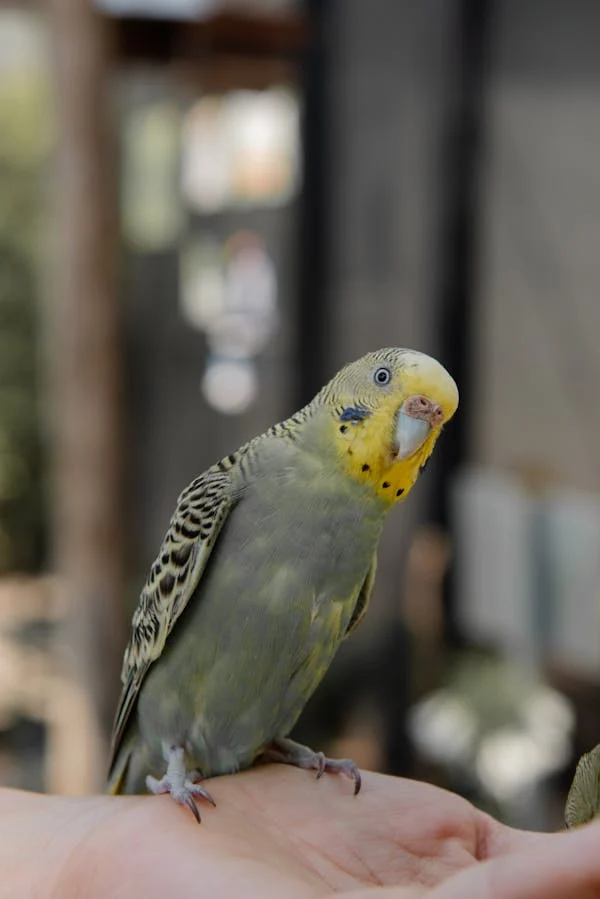
Table of Contents
Introduction
Budgies (also known as parakeets) are among the most popular pet birds worldwide—and for good reason! These colorful, intelligent, and charming little companions can bring years of joy to your home with their playful antics and sweet personalities. Whether you’re considering bringing home your first budgie or looking to enhance your current budgie bird care routine, this guide covers everything you need to know to keep your feathered friend healthy, happy, and thriving.
As small parrots native to Australia, budgies have adapted remarkably well to living alongside humans, but they still require specific care to ensure they lead their best lives. With proper budgie bird care, these delightful birds can live 7-12 years, with some even reaching 15-20 years in optimal conditions!
Budgie Basics
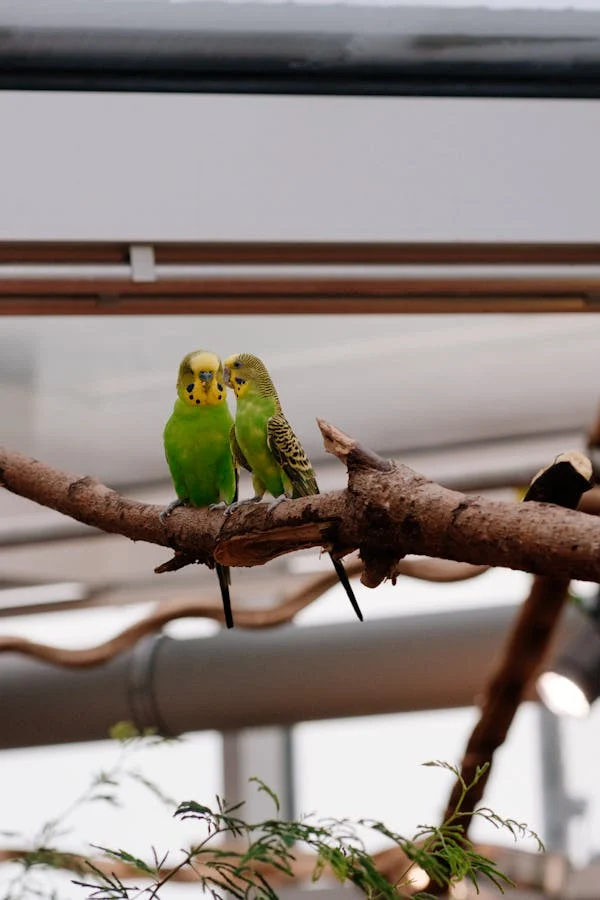
Origins and Natural Habitat
Budgerigars (Melopsittacus undulatus) originate from the arid regions of Australia, where they live in large flocks that can number in the thousands. In the wild, they’re primarily green and yellow—a natural camouflage against predators. Their native habitat consists of open grasslands and scrublands, where they forage for seeds and grasses.
Lifespan and Size
With proper budgie bird care, these small parrots typically live 7-12 years in captivity, though some have been known to reach 15-20 years. They’re compact birds, measuring about 7 inches (18 cm) from head to tail and weighing only 1-1.4 ounces (30-40 grams).
Temperament and Intelligence
Budgies are highly social, curious, and surprisingly intelligent birds. They can learn to mimic human speech (sometimes even better than larger parrots!), recognize patterns, and solve simple puzzles. Their playful and affectionate nature makes them excellent companions, especially when properly socialized.
Color Variations
Through selective breeding, budgies now come in an impressive array of colors beyond their natural green and yellow, including:
- Blue, white, and violet variations
- Grey and mauve tones
- Albino and lutino (yellow) varieties
- Pied, spangle, and other pattern mutations
Male vs. Female Differences
Telling male and female budgies apart:
- Males typically have blue ceres (the fleshy area above the beak), which deepen in color as they mature
- Females usually have brown, tan, or whitish ceres, which often become crusty brown when in breeding condition
- Males tend to be more vocal and better talkers
- Females can be slightly more territorial
Bringing Your Budgie Home
Choosing a Healthy Bird
When selecting a budgie, look for these signs of good health:
- Alert, bright eyes without discharge
- Clean, smooth feathers (no missing patches)
- Active movement and perching with even weight distribution
- Clear nostrils and clean vent area
- No signs of breathing difficulties or tail bobbing
- Smooth beak without overgrowth
- Curious and responsive behavior
Finding a Reputable Source
Consider these options when deciding where to get your budgie:
- Bird Rescues/Adoption Centers: Many budgies need rehoming and adoption centers often provide thorough health information
- Reputable Breeders: Research local breeders who focus on health and temperament
- Pet Stores: If choosing this route, observe the store’s conditions carefully—clean facilities, knowledgeable staff, and healthy-looking birds are must-haves
Quarantine Period
If introducing a new budgie to a home with existing birds:
- Keep the newcomer separated for 30-45 days
- Use separate air spaces when possible
- Wash hands between handling birds
- Monitor for any signs of illness
- Consider a preventative vet check during this period
Housing & Environment
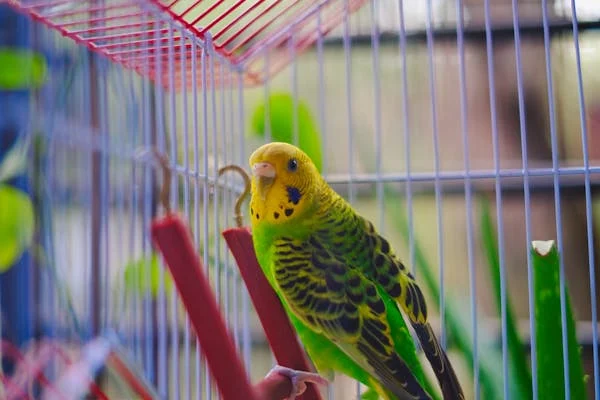
Optimal Cage Setup
The cage is your budgie’s primary living space, so getting it right is essential for proper budgie bird care:
- Size: Width is more important than height—budgies fly horizontally, not vertically. Choose the largest cage your space allows
- Bar Spacing: ½ inch maximum to prevent escape or head entrapment
- Materials: Stainless steel or powder-coated metal (avoid zinc or lead components)
- Placement: Position away from drafts, direct sunlight, kitchens (cooking fumes are toxic), and high-traffic areas that might stress your bird
- Perch Placement: Place perches at varying heights, ensuring they don’t hang over food/water containers
- Accessories Arrangement: Ensure toys don’t block movement between perches
Cleaning Schedule
Maintaining cleanliness is a critical aspect of budgie bird care:
Daily:
- Replace cage liner/substrate
- Wash and refill water dishes
- Remove uneaten fresh foods
- Wipe down visibly soiled areas
Weekly:
- Thoroughly clean and disinfect food and water containers
- Wipe down perches and cage bars
- Replace toys as needed
- Clean surrounding area (vacuum seed husks)
Monthly:
- Complete cage breakdown and deep clean
- Disinfect with avian-safe products (avoid chemical cleaners)
- Inspect cage for damage or wear
- Rotate and replace toys
Temperature & Lighting
Budgies thrive in environments similar to their natural habitat:
- Temperature: Maintain 65-85°F (18-29°C), avoiding rapid fluctuations
- Humidity: Moderate humidity (40-60%) is ideal
- Lighting: Provide 10-12 hours of natural indirect light or full-spectrum lighting
- Darkness: Ensure quiet, complete darkness for 10-12 hours for proper rest
- Natural Light: Access to natural light (filtered through windows) benefits vitamin D production, but avoid direct sun exposure which can cause overheating
Diet & Nutrition
Foundation Diet: Pellets vs. Seeds
One of the most common mistakes in budgie bird care is relying solely on seed diets:
Pellets (60-70% of diet):
- Nutritionally complete with balanced vitamins and minerals
- Less selective feeding (birds can’t pick out only favorite items)
- Reduced fat content compared to seeds
- Available in various formulations for different life stages
Seeds (10-20% of diet):
- High in fat, low in vitamins
- Budgies love them but they’re more like “budgie junk food”
- Best used as occasional treats or training rewards
- Quality mixes without artificial colors are preferable
Transitioning from Seeds to Pellets:
- Introduce pellets alongside seeds, gradually increasing pellet ratio
- Try different pellet brands and sizes
- Crush pellets over seeds to familiarize the taste
- Be patient—transitions can take weeks to months
Fresh Foods (20-30% of diet)
Fresh vegetables should be a regular part of your budgie’s diet:
Safe Vegetables (Daily):
- Dark leafy greens: kale, spinach, romaine, chard
- Carrots and carrot tops
- Bell peppers (all colors)
- Broccoli and cauliflower
- Zucchini and cucumber
- Peas and green beans
Safe Fruits (1-2 times weekly in small amounts):
- Apple (no seeds)
- Berries: strawberries, blueberries
- Melon
- Papaya
- Mango
Safe Herbs:
- Cilantro
- Parsley
- Basil
- Mint
- Dill
TOXIC FOODS – AVOID THESE!
The following foods can be deadly to budgies and should NEVER be offered:
- Avocado (contains persin, toxic to birds)
- Chocolate and caffeine
- Alcohol in any form
- Onions and garlic
- Apple seeds, cherry pits (contain cyanide)
- Rhubarb
- Salty or high-fat foods
- Dairy products
- Mushrooms
Water Requirements
- Clean, fresh water daily (minimum)
- Change water more frequently if soiled
- Dish vs. bottle considerations:
- Dishes are more natural but can be contaminated easily
- Bottles keep water cleaner but may be harder for some birds to use
Supplements
While a balanced diet minimizes the need for supplements, these items should always be available:
- Cuttlebone: Provides calcium and helps keep beaks trimmed
- Mineral block: Offers essential minerals and satisfies natural pecking instincts
- Vitamin supplements: Generally unnecessary with a proper diet but may be recommended by a vet for specific health conditions
Health & Wellness
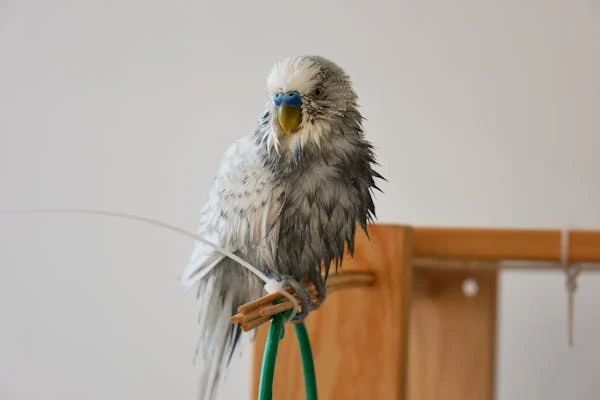
Finding an Avian Vet
Regular veterinary care is an essential component of budgie bird care:
- Locate an avian specialist before an emergency arises
- Schedule annual wellness exams, even if your budgie appears healthy
- Ask about after-hours emergency options
- Find avian vets through the Association of Avian Veterinarians or recommendations from local bird clubs
Signs of a Healthy Budgie
A healthy budgie will typically exhibit:
- Bright, alert eyes
- Smooth, well-groomed feathers
- Active, curious behavior
- Regular eating and drinking
- Normal droppings (firm green with white urates)
- Sleeping on one foot with head tucked
- Playful interaction with toys
- Consistent weight
Common Budgie Illnesses and How to Spot Them Early
Respiratory Issues:
- Tail bobbing when at rest
- Clicking or wheezing sounds
- Discharge from nostrils
- Open-mouth breathing
- Sneezing or coughing
Digestive Problems:
- Changes in droppings (watery, discolored, or unusually textured)
- Decreased appetite
- Weight loss
- Regurgitation (different from normal feeding behavior)
- Swollen or fluid-filled abdomen
Feather Issues:
- Plucking or chewing feathers
- Bald patches
- Damaged feathers
- Fluffed appearance for extended periods
Other Common Conditions:
- Scaly face/leg mites (crusty formations around beak, eyes, or legs)
- Bumblefoot (swollen, red feet from improper perches)
- Egg binding in females (straining, lethargy, abdominal swelling)
- Tumors (unusual lumps or bumps)
Why Is My Budgie Screaming?
If your budgie is screaming excessively, consider these potential causes:
- Seeking attention (positive or negative)
- Boredom or lack of stimulation
- Fear or perceived threats
- Pain or discomfort
- Hormonal behavior, especially during breeding season
- Territorial response to changes in environment
- Hearing other birds (even from outside)
Solutions for screaming behavior:
- Ensure adequate mental stimulation and physical exercise
- Maintain a consistent routine
- Address potential health issues with an avian vet
- Avoid reinforcing screaming by responding only when quiet
- Increase environmental enrichment
- Maintain regular sleep schedule (10-12 hours of darkness)
Preventative Care
The best budgie bird care includes preventative measures:
- Annual veterinary check-ups
- Regular weight monitoring (gram scale)
- Daily observation of behavior, droppings, and food intake
- Clean environment and proper nutrition
- Avoiding exposure to toxins (smoke, non-stick cookware fumes, aerosols)
- Protecting from drafts and temperature extremes
Basic First Aid Kit
Keep these items on hand for minor emergencies:
- Styptic powder (for minor bleeding)
- Small towel for gentle restraint
- Small flashlight
- Tweezers (blunt-ended)
- Clean eyedropper
- Heating pad (no auto-shutoff)
- Avian vet’s contact information
- Travel carrier ready to go
Handling, Taming & Training
Getting Started with Taming
Patience is key when taming budgies:
- Allow 1-2 weeks for your budgie to acclimate to their new home before training
- Begin by sitting quietly near the cage, talking softly
- Gradually introduce your hand in the cage without attempting to touch the bird
- Offer treats from your hand (millet spray works well)
- Progress to step-up training only when the budgie is comfortable with your presence
Step-Up Training
Teaching your budgie to “step up” onto your finger:
- Position your finger horizontally in front of the budgie, just above their feet
- Use gentle pressure against the lower belly while saying “step up”
- Reward immediately with praise and treats
- Practice consistently but keep sessions short (5-10 minutes)
- Gradually increase the duration and complexity of handling
Teaching Simple Words and Sounds
Budgies are excellent mimics:
- Male budgies typically learn to talk more readily than females
- Start with simple words like “hello,” “pretty bird,” or their name
- Repeat consistently during quiet, focused sessions
- Reward any attempt at mimicry
- Use a clear, high-pitched voice
- Be patient—some budgies learn quickly while others may never talk
Behavior & Socialization
Understanding Normal Budgie Behaviors
Common Behaviors and Their Meanings:
- Head bobbing: Excitement or territorial display
- Beak grinding: Contentment, usually before sleep
- Regurgitation: Sign of affection when directed at another bird, toy, or human
- Wing flapping: Exercise or display
- Preening: Normal grooming behavior
- Chattering: Contentment or practicing sounds
Single Budgies vs. Pairs
Single Budgie Considerations:
- Requires more human interaction and attention
- May bond more closely with human companions
- Typically easier to tame and train
- May be more likely to learn to talk
- Can become lonely without adequate interaction
Budgie Pairs:
- Provide company for each other when humans are busy
- May be less dependent on human interaction
- Healthier social development
- More natural behaviors observable
- Can still be tamed with patience and consistency
Introducing New Budgies
When adding to your flock:
- Quarantine new birds for 30-45 days
- Introduce in adjacent cages first
- Monitor interactions for signs of aggression
- Provide multiple food dishes and perches to reduce competition
- Be prepared to separate if serious fighting occurs
Addressing Common Behavioral Issues
Biting:
- Usually stems from fear or past negative experiences
- Avoid punishment, which reinforces fear
- Work on building trust through positive reinforcement
- Respect body language indicating discomfort
Excessive Screaming:
- Differentiate between normal vocalization and problem screaming
- Address potential causes (boredom, attention-seeking, fear)
- Reward quiet behavior
- Ensure adequate mental stimulation
Territorial Behavior:
- Common during breeding season
- Provide adequate space and resources
- Respect boundaries when birds show territorial signals
- Consider cage rearrangement to reset territorial behaviors
Enrichment & Play
Importance of Mental Stimulation
Just like their larger parrot cousins, budgies are intelligent birds that need mental stimulation to thrive. Proper budgie bird care includes providing various enrichment opportunities:
Types of Toys and Their Benefits:
- Foraging Toys
- Hide treats inside puzzle toys
- Encourage natural food-finding behaviors
- Help prevent obesity and boredom
- Shredding Toys
- Made from bird-safe paper, cardboard, or natural fibers
- Satisfy natural chewing instincts
- Help maintain beak health
- Interactive Toys
- Bells, swings, ladders
- Provide physical exercise
- Stimulate problem-solving abilities
- Comfort Items
- Tent-like structures (monitor for nesting behavior)
- Soft rope perches (watch for fraying)
Toy Safety Guidelines
- Remove toys with loose parts that could be swallowed
- Regularly inspect for damage and replace worn items
- Avoid toys with small metal parts, especially zinc or lead
- Ensure no sharp edges or entanglement hazards
- Choose appropriate toy sizes for budgies
Toy Rotation System
To maintain interest and mental stimulation:
- Divide toys into 3-4 groups
- Rotate different toys into the cage every 1-2 weeks
- Clean toys thoroughly between rotations
- Introduce new toys periodically
- Note which toys are favorites and keep similar options available
Grooming
Bathing Options
Budgies typically enjoy bathing, which helps maintain feather condition:
- Shallow Dish: Offer a shallow dish with fresh water 2-3 times weekly
- Misting: Use a clean spray bottle with room-temperature water for a gentle mist
- Wet Greens: Some budgies enjoy bathing on wet lettuce leaves
- Commercial Bath Products: Specially designed bird baths that attach to cage doors
Nail Care
- Provide varied diameter natural perches to help wear nails naturally
- Monitor nail length—overgrown nails can catch on fabric or cause perching difficulties
- If trimming is needed, seek veterinary guidance for the first time
- Keep styptic powder on hand in case of bleeding
Beak and Feather Monitoring
- Healthy beaks should wear naturally with proper toys and cuttlebone
- Overgrown or abnormally shaped beaks require veterinary attention
- Monitor molting (natural feather replacement) for completeness
- Watch for unusual feather loss or damaged feathers
Safety Considerations
Household Hazards
Many common household items are dangerous to budgies:
- Kitchen Hazards:
- Non-stick cookware (Teflon) releases toxic fumes when overheated
- Gas stove emissions
- Aerosol cooking sprays
- Other Common Dangers:
- Scented candles and air fresheners
- Cigarette smoke and vaping
- Cleaning products and fumes
- Open windows and doors
- Ceiling fans
- Other pets (cats, dogs)
- Houseplants (many are toxic)
- Lead in old paint or decorative items
- Small spaces where birds could become trapped
Bird-Proofing Your Home
For supervised out-of-cage time:
- Close windows, doors, and cover mirrors
- Turn off ceiling fans
- Contain other pets in separate rooms
- Remove or cover toxic plants
- Check for small spaces behind furniture
- Be aware of water hazards (toilets, sinks)
Budgie Ownership Costs
Initial Setup Costs
Essential Items:
- Quality cage: $70-150
- Toys and perches: $30-50
- Food and water dishes: $10-20
- Initial food supply: $20-30
- Basic first aid supplies: $15-25
- Travel carrier: $20-40
- Initial vet check: $50-100
Total Initial Investment: $215-415
Ongoing Costs
Monthly Expenses:
- Quality pellets: $10-15
- Seed mix: $5-10
- Fresh vegetables and fruits: $15-20
- Toy replacements: $10-15
- Substrate/cage liner: $5-10
Annual Expenses:
- Routine veterinary check-up: $50-100
- Potential emergency fund: $200+ recommended
- Cage upgrades/replacements: $50-100
Estimated Annual Cost: $600-900
Frequently Asked Questions
“Why is my budgie not eating?”
New budgies may not eat immediately due to stress. Ensure you’re offering familiar foods initially. If a budgie stops eating for more than 24 hours, this requires immediate veterinary attention as birds can develop health complications quickly when not eating.
“How do I know if my budgie is male or female?”
Adult budgies can usually be sexed by their cere color—males typically have blue ceres, while females have tan, white, or brown ceres. However, young budgies and certain color mutations can make this determination challenging.
“How often should I clean my budgie’s cage?”
Daily spot cleaning, weekly perch and toy wiping, and monthly deep cleaning is recommended for optimal budgie bird care.
“Can budgies eat the same fruits and vegetables as humans?”
Many fruits and vegetables are safe for budgies, but some common human foods like avocado, chocolate, and caffeine are toxic to birds. Always research before introducing new foods.
“Why is my budgie screaming?”
Budgies may scream due to boredom, seeking attention, fear, hormonal behavior, or potential health issues. Assessment of environment, routine, and health can help determine the cause.
“Should I cover my budgie’s cage at night?”
Covering the cage can provide security and ensure adequate darkness for proper sleep. Use a breathable cotton cover and maintain consistent sleeping hours.
“How long does it take to tame a budgie?”
Taming timeline varies widely—some budgies may step up within days, while others might take months. Consistency, patience, and positive reinforcement are key to successful taming.
Conclusion
Providing proper budgie bird care is a rewarding commitment that creates a loving, mutually beneficial relationship between you and your feathered companion. These intelligent, social birds bring joy, companionship, and endless entertainment when their needs are met appropriately.
Remember that each budgie has a unique personality and may require individualized approaches to care. By following the guidelines in this comprehensive guide, you’re well on your way to ensuring your budgie lives a healthy, enriched, and happy life. The time and effort you invest in understanding and meeting your budgie’s needs will be rewarded with years of delightful companionship from these charming little birds.
Your commitment to excellent budgie bird care reflects your respect for these remarkable creatures and their natural behaviors and needs. With proper housing, nutrition, enrichment, preventative health care, and lots of love, your budgie can thrive as a beloved member of your family.

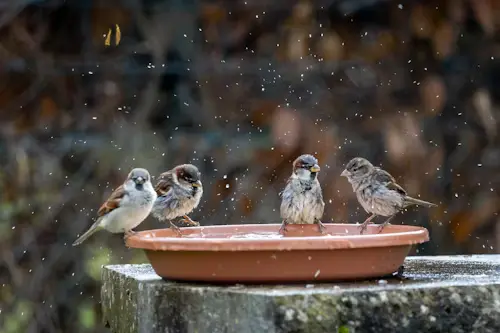
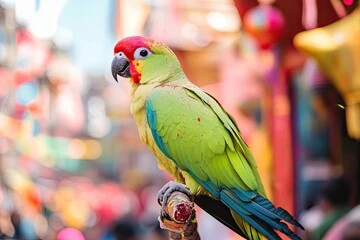

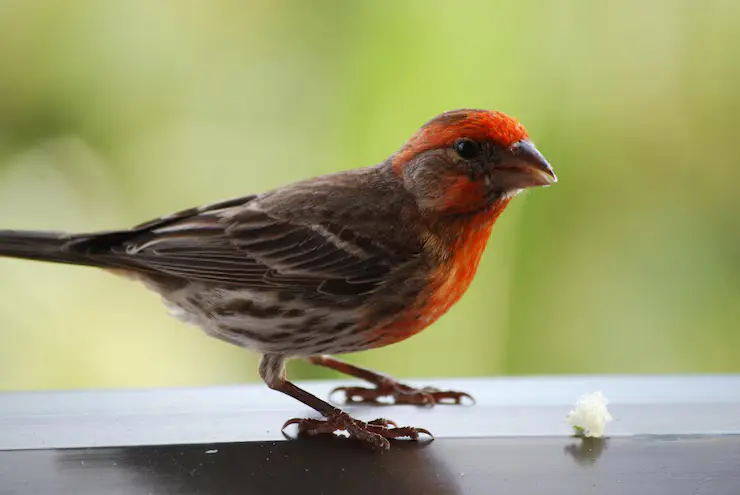
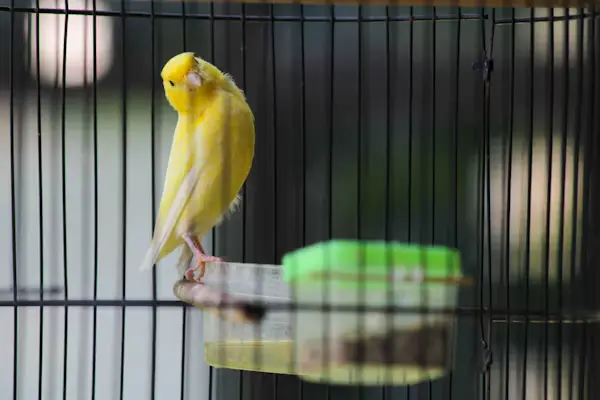

4 Comments